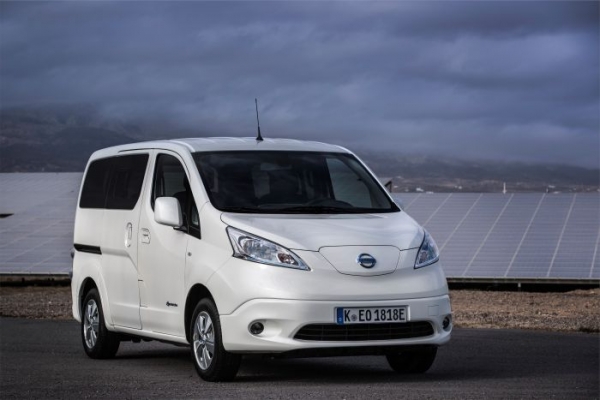
14.6.2019. Emission-free transportation is needed, particularly on the “last mile”: Over 10,000 copies of the City of van e-NV200 with a new 40-kWh battery and 60 percent more coverage have been ordered since the launch in February of 2018 at Nissan in Europe – so because of large fleet customers increasingly rely on sustainability.
The Nissan e-NV200 last year in ten European markets, the best-selling zero-emission commercial vehicle – including the UK, Italy, Norway and the Netherlands. Both the Transporter as well as the seven-seat Passenger variant, in the case of large delivery services, transport companies and private car owners heavily in demand – as well as the most recent fleet orders by DHL and Chronopost show.
A good choice for the practical and efficient Nissan e-NV200 for commercial and private use alike, because it combines the best features of the award-winning NV200 with the electric vehicle technology of the Nissan LEAF – the best-selling electric vehicle in Europe in 2018.
In the WLTP test cycle (Worldwide Harmonized Light Vehicle Test Procedure), the e-NV200 with a battery charge has a range of up to 200 kilometres in the combined cycle and up to 301 kilometers in the urban cycle* – 60 per cent more than in the first generation of batteries made.
Thanks to the intelligent, space-saving design, the new 40 kWh ends of the battery, the Transporter loose nothing of its impressive load capacity and payload: The cargo van features a 4.2 cubic metres of load volume, enough for two Euro pallets, or other cargo with depending on the equipment, up to 667 kilograms in weight.
So, when charging Nissan for the e-NV200, a number of practical solutions. In addition to the normal household plug, customers can charge with a Charging Wallbox at home your vehicle in 8.5 hours from 0 to 100 percent complete. In cooperation with E. ON Nissan offers the Wallbox for the price of EUR 1 865, including Installation by an electrician on-site. At a quick charger, the e-NV200 from 20 to 80 percent in just 40 to 60 minutes of charging**.
“The success of the e-NV200 shows that we have the right product at the right time. The acceleration of the fleet electrification, particularly in the inner cities is a challenge for our customers. In close cooperation we create the appropriate environment for a smooth Transition to electromobility,“ explains Paolo D’Ettore, Director of commercial vehicles, Nissan Europe. “Thanks to its versatility and to its emissions-free powertrain, companies can maximize with the Nissan e-NV200 to its economic success and to contribute to a more sustainable future.”
Since its launch in the year 2014, the Nissan e scored-NV200 Europe-wide sales successes, to date, more than 25,000 vehicles were delivered to customers. In addition to the Nissan LEAF, the Nissan e-NV200 is at the forefront of Nissan’s Intelligent Mobility strategy, which aims to contribute to the three pillars of “Smart Power”, “Smart Driving” and “Intelligent Integration” to a more efficient and better-connected mobility.
*Up to 301 km range in urban WLTP cycle. The combined and range according to the WLTP is 200 km.
**The specified time for the fast charge refers to the charge on a CHAdeMO fast-charging station. The remaining charging time is carried out in accordance with standard charging procedures. The charging time depends on the load conditions, including Fast-loading type, and conditions, battery capacity and ambient and battery temperature to the charging time.
Nissan e-NV200: electric power consumption (kWh/100 km): combined with 25.9; CO2 emission, combined: 0 g/km; efficiency class: A+
The specified values were determined in accordance with the stipulated measuring method in accordance with VO(EC) 715/2007 in the currently applicable version 2017/1347 (WLTP).
Zero CO2 emissions during use (use of energy from renewable sources). Wear parts are not included. The figures do not refer to to individual vehicle and are not part of the offer, but serve alone comparison purposes between the different vehicle types. Further information on official fuel consumption and the official specific CO2 emissions and power consumption of new passenger can be removed from the carriage motor to the “guide on the fuel economy, CO2-emissions and power consumption of new Passenger cars”, of the hand (DAT) is a German automobile litter available for free. The fuel consumption/power consumption and the CO₂ emissions of an electric vehicle depends on the efficient use of the fuel/energy content of the battery by the electric vehicle, and by the driving behaviour and other non-technical factors (e.g. environmental conditions).


Nissan e-NV200